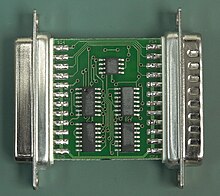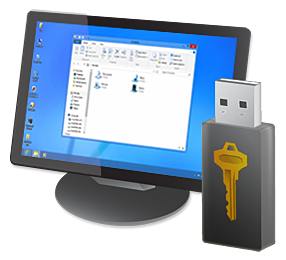Hardware-based protection uses a physical device, commonly known as a dongle, USB hardware key or USB security key. To implement, KEYLOK APIs are integrated with your software. Afterwards, the software only runs if the dongle is physically present on the computer or machine. Additionally, the dongle can also control how the end-user actually uses the software, referred to as software licensing.
- Run Dongle Protected Software Without Dongle Software
- Run Dongle Protected Software Without Dongle Setup
- What Is A Graphic Dongle
- What Is A Dongle
1 Disk and dongle protection against software and media piracy. Disk protection — distribute the program on a physical medium, such as a CD and make the CD hard to copy. Dongle protection — the program refuses to run without a hardware token distributed with the program. Our dongle emulator allows you to run your software without the dongle. When used as a software protection device, dongles mostly appear as two-interface security tokens with transient data flow that does not interfere with other dongle functions and a pull communication that reads security data from the dongle. Without the dongle, the software may run only in a restricted mode, or not at all. Download UMT Dongle Latest Crack: QcFire v5.5 Using Without Dongle. Here is UMT Qcfire crack without box download Free. The UMT Crack 2020 given here is absolutely free, no dongle will be required to use it.
What We Know About Them
Run Dongle Protected Software Without Dongle Software
The dongle is a software protection device that takes the shape of a small piece of hardware that plugs into a communications port (generally USB) on a computer and serves as an electronic 'key' for a piece of software; the program will run only when the dongle is plugged in.
Characteristics
Run Dongle Protected Software Without Dongle Setup
The purpose of the dongle is copy protection or authentication of software to be used on a system. In its most basic form, the dongle mostly appears as a two-interface security token with transient data flow that does not interfere with other dongle functions and a pull communication that reads security data from the dongle.
Dongles are used by proprietary software vendors as a form of copy protection or digital rights management, because it is far harder to replicate a dongle than to copy the software it authenticates. Without the dongle, the software may run only in a restricted mode, or not at all.
Modern dongles include built-in strong encryption and use fabrication techniques designed to thwart reverse engineering. Typical dongles also now contain non-volatile memory — key parts of the software may actually be stored and executed on the dongle. Thus dongles are now essentially secure cryptoprocessors that execute inaccessible program instructions that may be input to the cryptoprocessor only in encrypted form.
Hardware cloning, where the dongle is emulated by a device driver, used to be a big threat to traditional dongles. To thwart this, advanced dongles are based on smart card products, which are widely used in extremely rigid security requirement environments such as military and banking.

Network dongles significantly lower deployment cost for licensing networked instances of an application - a single server-side dongle can license a number of instances of an application via the network. Some dongle vendors pre-configure network dongles for the maximum number of peer applications to enable, other vendors enable software developers to tailor the number of peer applications to their needs.
For some extremely secure software installations, for example on computers where HID processes are not allowed to run, software producers insist that the dongles they use for copy protection use device drivers. However, in general dongle drivers bring problems for end-users. Most developers and software vendors aimed to get rid of the dongle driver headache. Most modern entry-level dongles are driverless dongles, making dongle deployment and management easy for both software vendors and end-users. These driverless dongles are based on plug 'n' play (HID) technology, which works like a plug 'n' play mouse or keyboard. Higher-end dongles can be both, i.e. driverless in HID environments, as well as providing a driver for certain circumstances.
For some high-security installations, where it is paramount that there is no misuse by computer clock adjustment, an advanced dongle with an embedded real-time clock can be used. The dongle's time calculation is driven by an internal clock which is battery-driven and sustainable for a number of years, sometimes up to 3 years. Its unique design tackles license misuse by computer clock adjustment. Not only is this technology critical to some high-security installations, but it is also an ideal dongle solution for license rental and trial management.
Expanding on this technology, some dongle manufacturers produce a rechargeable RTC dongle, whereby the dongle's battery can be repeatedly charged/discharged. When not connected to a host computer, the dongle runs on its internal battery, but once connected, it runs on a charge from the host, while at the same time recharging its internal battery.
More innovative modern dongles for ultimate dongle security provide a feature called code porting whereby the software vendor can transfer part of the important program code or license enforcement into a secure hardware environment on the dongle (such as in a smart card OS). An ISV can port thousands of lines of important computer program code into the dongle.

Technical Support
Support Resources
- Support Knowledgebase
Product Information
- Software & Hardware Products
Information in this knowledgebase article applies to:

- All former Keil products, protected with a LPT-Dongle
SYMPTOM
My old Keil product is protected with a security device/dongle connected to the parallel LPT-Port.
(Microphar: Green=CA166/PK166,Dark Blue=CA51, Red=PK51, Sentinel Pro: product printed on Dongle)
My current PC/Laptop still has an LPT-interface but I will have to exchange the computer someday.
New PCs/Laptops usually don't offer a LPT-Port.
QUESTIONS
- Can I run my Keil product without the Dongle?
- Is it possible to extend my new PC with a parallel-port extension board (PCI/PCIe)?
- Can I update my product to a different licensing solution?
- Is a current version of my product compatible with my project?
- I have updated my Windows Operating System - is my product still compatible?
- Is my former product version still available for download/installation?
- How can I compile my application with identical settings and tool versions, but no LPT-Port available?
- How can I keep my LPT Dongle protected product supported in the future?
ANSWERS
- No, the Dongle is mandatory. Without the Dongle our tools are limited to the evaluation code size.
- Yes, this is possible, but it is not guaranteed that all such boards are supported. You can install the Sentinel Protection Installer and see if the Dongle is detected. USB to LPT converters usually don't work with this driver.
- No, this is not possible. The protection mechanism of old tool versions cannot be updated to USB Dongles or node-locked licenses as they are used today. You can also purchase an update and migrate your project to the latest tool versions. Your local distributor can send you a quotation.
- No, it won't. Be aware that with each new product version your project can behave differently. It strongly is recommended to compare/test the resulting project from scratch with each new version of your product.
- This cannot be guaranteed. For example, a product that was released in 2001 is probably not compatible to an operating system of today.
- Most older products were delivered on floppy disks or CD, but you can download all versions back to the year 2000 with this link. Note that most CD viewer programs (they start when you insert the Keil CD) are not compatible to Windows 7 and higher. However, you can find the install programs for the 8051, 251 and 166 tools in sub-folders on the CD.
- You can't build your application without the Dongle.
- The only chance you have is to keep an old PC in stock. This PC has to have:
- an LPT-Port
- the former Operating System, i.e. Windows XP
- the Keil product installed.
Also, keep the Dongle stored safely. Losing the Dongle means losing the product. There are no replacement dongles available today.

If you cannot find the original installation CD or floppy disk, you can download different IDE versions from this link by inputting your license PSN number: http://www.keil.com/update/
MORE INFORMATION
- Refer to License Management in the Licensing User's Guide.
- Refer to Overview
SEE ALSO
- Refer to Sentinel Dongle Driver
- Refer to ARM: How to archive your Keil MDK project
- Refer to GENERAL: USE DONGLE WITH PORT EXTENSION CARD ON PCI BUS
What Is A Graphic Dongle
Last Reviewed: Thursday, October 15, 2020
What Is A Dongle
ProductsDevelopment Tools | Hardware & Collateral | Downloads | Support | Contact |
Cookie Settings | Terms of Use | Privacy | Accessibility | Trademarks | Contact Us | Feedback Copyright © 2005-2019 Arm Limited (or its affiliates). All rights reserved. | ||||